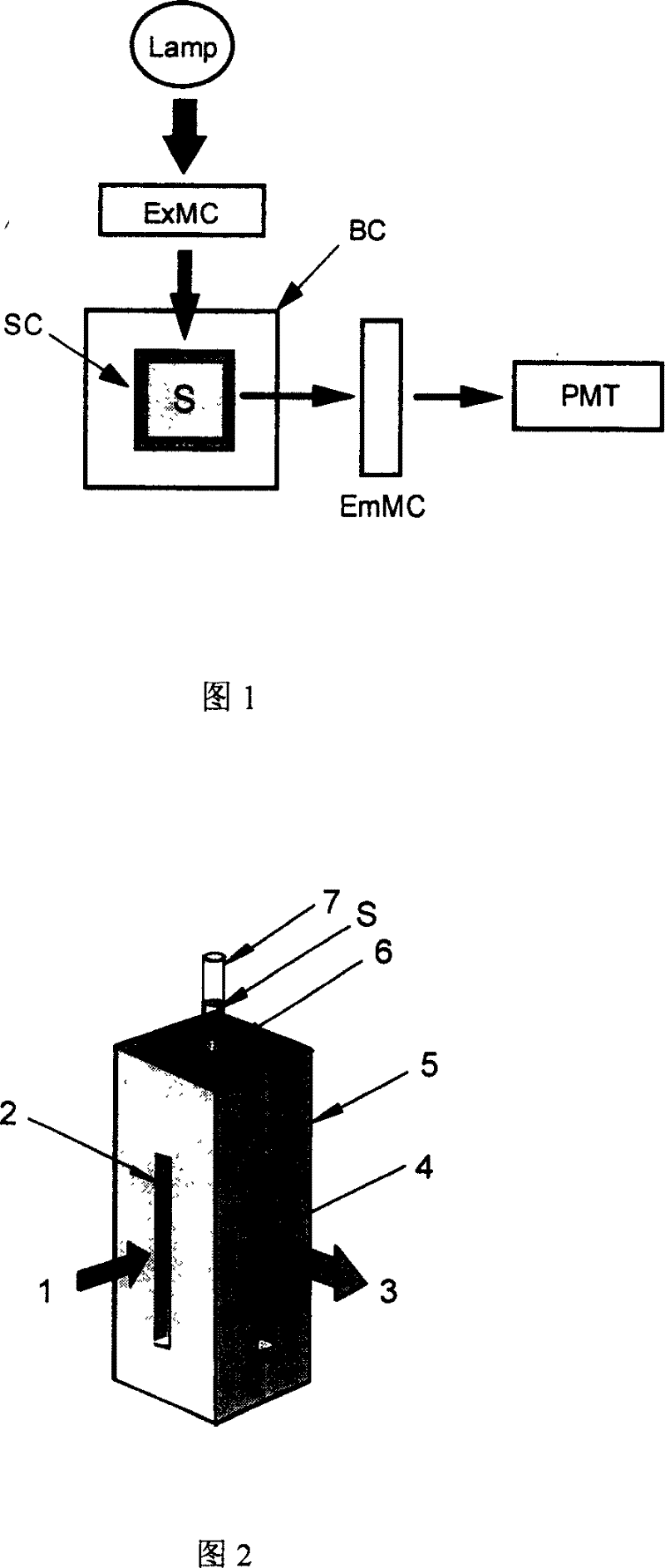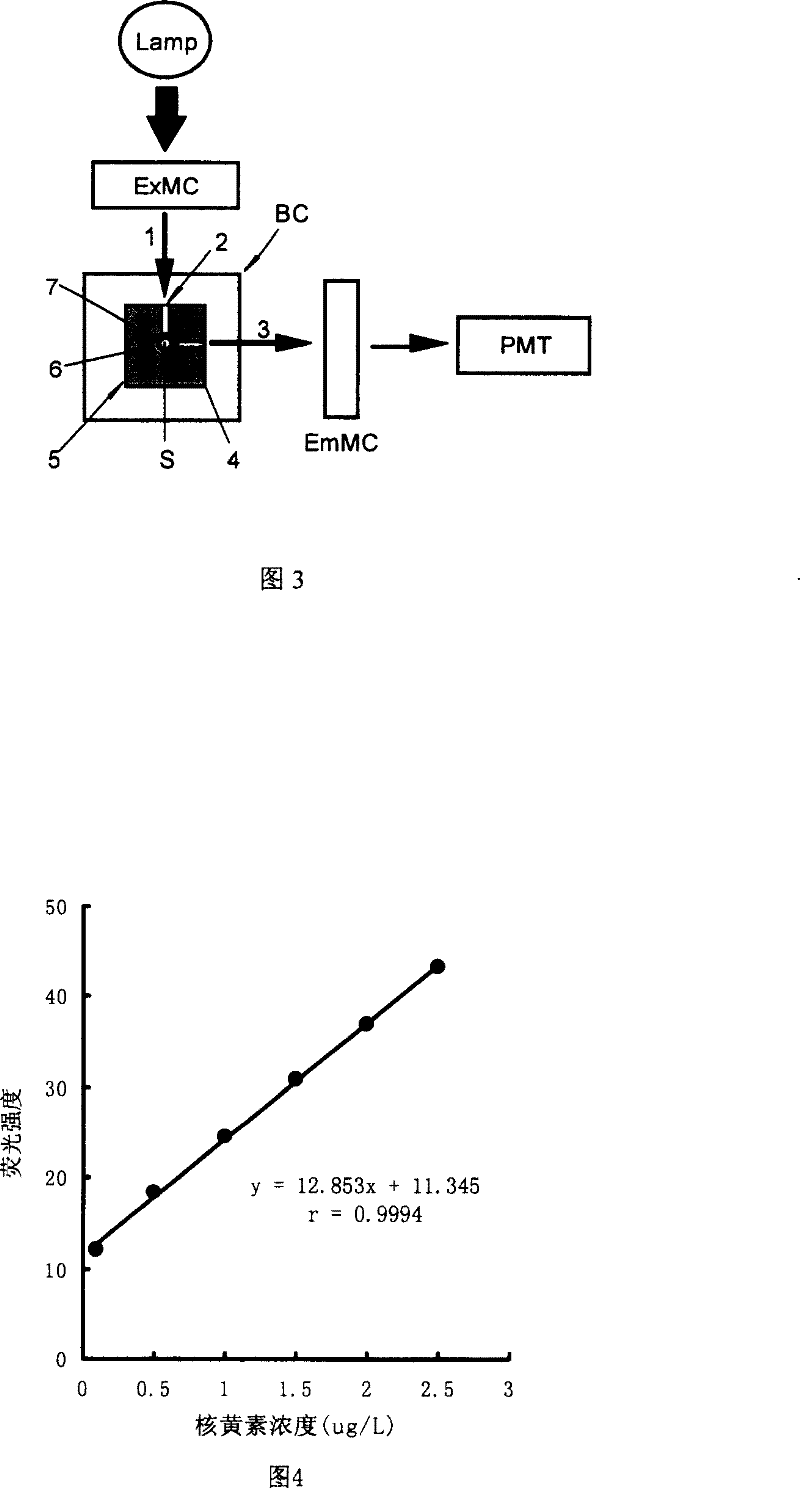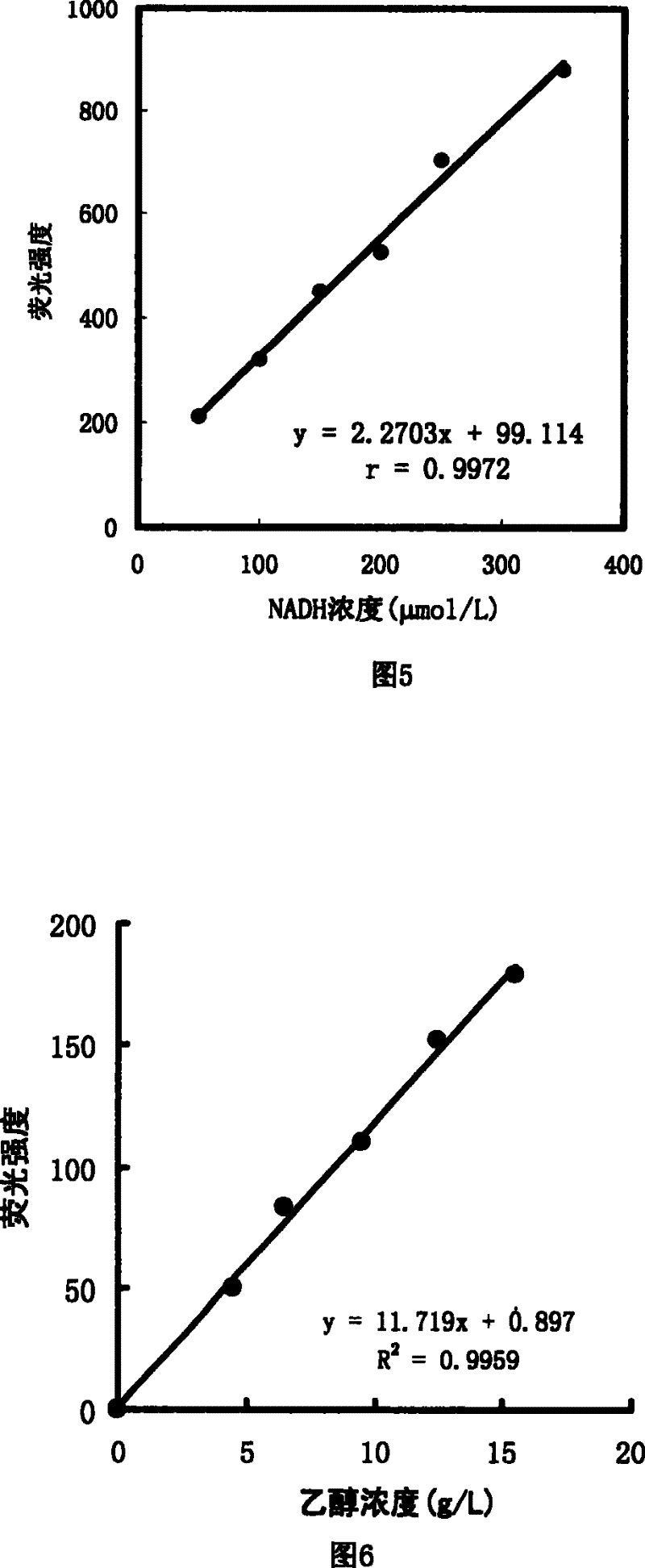Fluorescent capillary reaction device and fluorescent capillary analysis method
A technology of reaction device and fluorescence analyzer, which is applied in the directions of fluorescence/phosphorescence, material analysis by optical means, measurement device, etc., can solve the problem of inability to realize the fluorescence analysis of immobilized enzyme, and achieve the reduction and increase of fluorescence self-quenching phenomenon. Opportunity to be irradiated, the effect of increasing the light-receiving area
- Summary
- Abstract
- Description
- Claims
- Application Information
AI Technical Summary
Problems solved by technology
Method used
Image
Examples
Embodiment 1
[0061] Utilize the present invention to riboflavin (VB 2 ) standard solution (S) concentration was determined. Measuring conditions: excitation light wavelength 500nm, emission light wavelength 550nm, room temperature 20°C, sample volume 10 μL. When measuring, place the fixed seat (5) of the fluorescent capillary reaction device in the light path of the fluorescence analyzer; use the capillary (7) to inhale VB with concentrations of 0.10, 0.50, 1.00, 1.50, 2.00, and 2.50 μg / L respectively. 2 After the standard solution, insert the capillary (7) into the insertion hole (6) on the top of the holder (5) respectively, and measure its fluorescence intensity, the results are as follows: Figure 4 shown. VB 2 There is a good linear correlation between concentration and fluorescence intensity in the concentration range of 0.10-2.50μg / L.
Embodiment 2
[0063] In this embodiment, the concentration of reduced coenzyme I (NADH) is determined by using the present invention. Measuring conditions: the wavelength of excitation light is 352nm, the wavelength of emission light is 456nm, the room temperature is 20°C, and the sample volume is 10 μL. When measuring, place the fixed seat (5) of the fluorescent capillary reaction device in the light path of the fluorescence analyzer; use the capillary (7) to inhale NADH standard solutions with concentrations of 50, 100, 150, 200, 250, and 350 μmol / L respectively , insert the capillary (7) into the insertion hole (6) on the top of the holder (5) respectively, and measure the fluorescence intensity, the results are as follows Figure 5 shown. There is a good linear correlation between NADH concentration and fluorescence intensity in the concentration range of 50-350μmol / L. With oxidized coenzyme I, coenzyme II (NAD + or NADP + ) as a coenzyme dehydrogenase reaction, the final product is...
Embodiment 3
[0065] This example is based on the determination of ethanol concentration by the immobilized enzyme FCA method. Measuring conditions: the excitation light wavelength is 352nm, the emission light wavelength is 456nm, the room temperature is 20°C, and the amount of the liquid to be tested is 10 μL. Before the measurement, the enzyme is fixed on the inner wall of the capillary (7) to make an ethanol capillary bioreactor. During the measurement, the fixed seat (5) of the fluorescent capillary reaction device is placed in the light path of the fluorescence analyzer; the ethanol standard solution and the reaction concentration of 2, 4, 8, 10, 15 g / L are inhaled respectively with the ethanol capillary bioreactor. After the mixed solution of the reagent is inserted into the insertion hole (6) of the fixed seat (5) respectively, the fluorescence intensity is measured, and the results are as follows: Figure 6 shown. There is a good linear correlation between ethanol concentration an...
PUM
| Property | Measurement | Unit |
|---|---|---|
| length | aaaaa | aaaaa |
| thickness | aaaaa | aaaaa |
| length | aaaaa | aaaaa |
Abstract
Description
Claims
Application Information
 Login to View More
Login to View More - R&D
- Intellectual Property
- Life Sciences
- Materials
- Tech Scout
- Unparalleled Data Quality
- Higher Quality Content
- 60% Fewer Hallucinations
Browse by: Latest US Patents, China's latest patents, Technical Efficacy Thesaurus, Application Domain, Technology Topic, Popular Technical Reports.
© 2025 PatSnap. All rights reserved.Legal|Privacy policy|Modern Slavery Act Transparency Statement|Sitemap|About US| Contact US: help@patsnap.com



